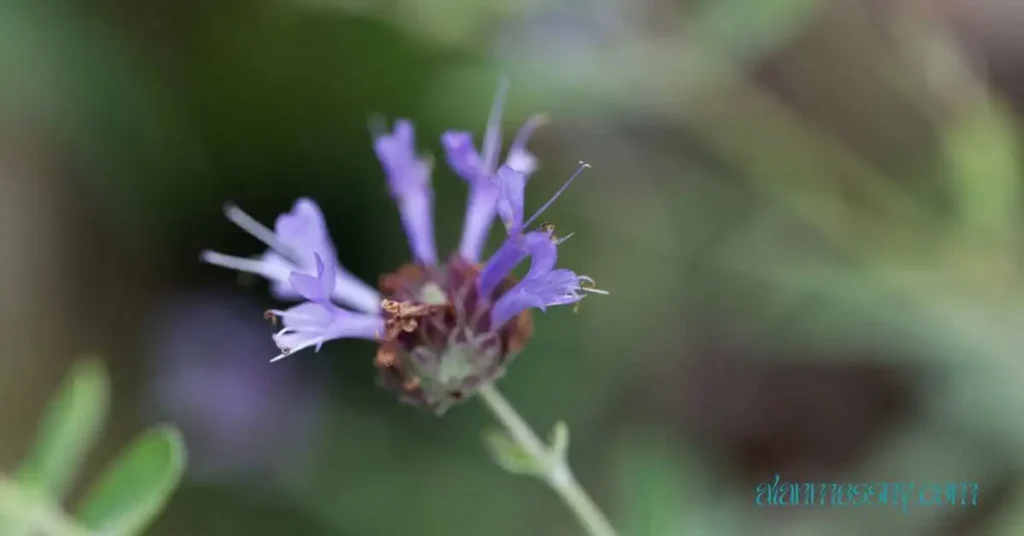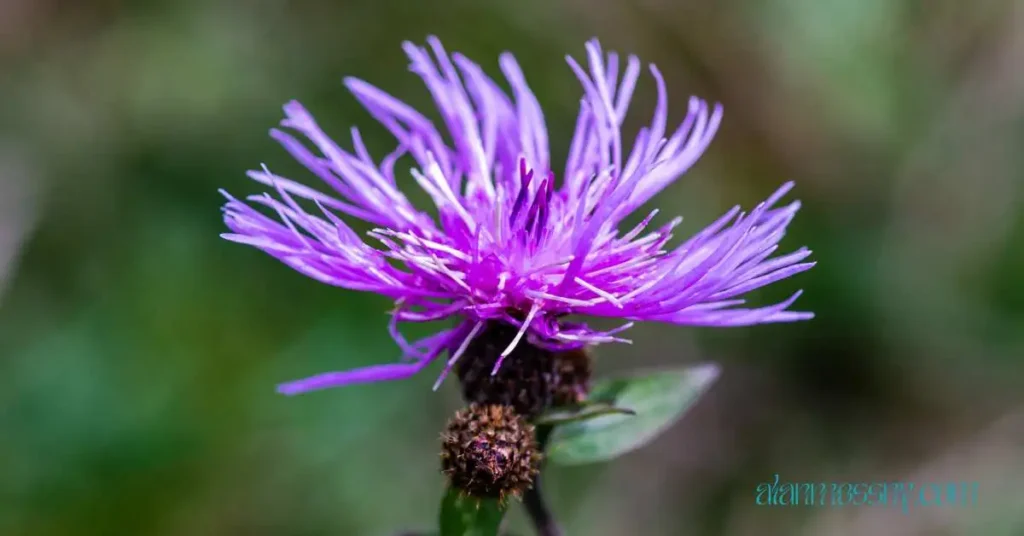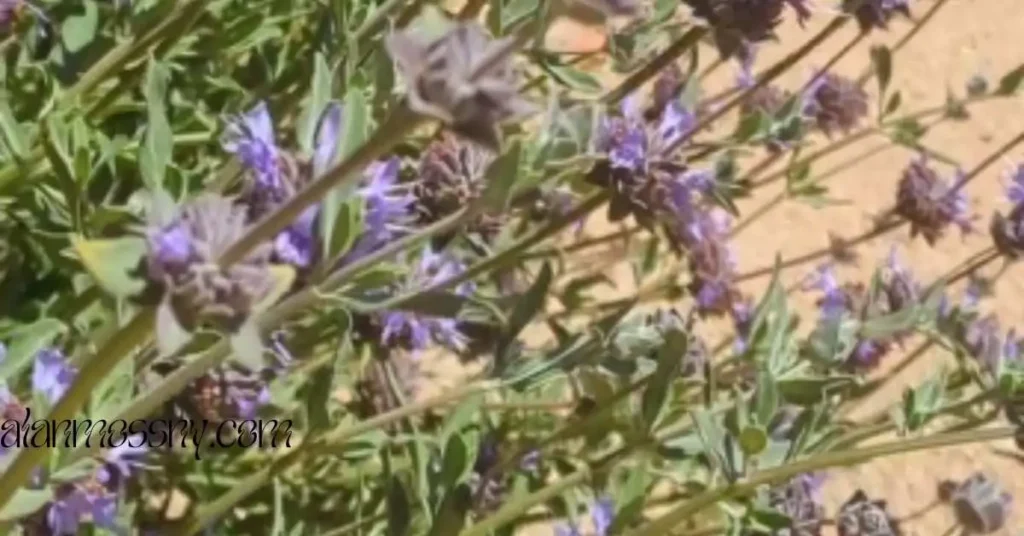Discover Salvia Pozo Blue: Nature’s Beauty & It’s Aura
Salvia Pozo Blue is a stunning perennial plant. It features vibrant blue flowers and aromatic foliage.
Salvia Pozo Blue, also known as Salvia chamaedryoides, is a captivating addition to any garden. This hardy perennial thrives in well-drained soil and full sun, making it an ideal choice for drought-tolerant landscapes. Its striking blue flowers bloom from late spring to fall, attracting pollinators like bees and butterflies.

The plant’s aromatic foliage adds a pleasant fragrance to your garden. Salvia Pozo Blue requires minimal maintenance, making it perfect for both novice and experienced gardeners. Regular deadheading can encourage continuous blooming. This plant not only enhances the visual appeal of gardens but also supports local wildlife, making it a sustainable choice.
Introduction To Salvia Pozo Blue
Salvia Pozo Blue, also known by its scientific name Salvia farinacea ‘Pozo Blue’, is a captivating plant known for its vibrant blue flowers and aromatic foliage. This blog post will introduce you to Salvia Pozo Blue, exploring its unique characteristics, origins, and cultural significance.
What Is Salvia Pozo Blue?
Salvia Pozo Blue is a perennial herb that belongs to the mint family. It is celebrated for its striking blue blooms that can brighten up any garden. Here are some key features:
- Scientific Name: Salvia farinacea ‘Pozo Blue’
- Height: Typically grows between 2 to 3 feet tall
- Flower Color: Vivid blue, sometimes with a hint of purple
- Bloom Time: Late spring through fall
- Foliage: Aromatic, with a grey-green color
This plant is a favorite among gardeners due to its low maintenance requirements. It thrives in well-draining soil and can tolerate drought conditions, making it ideal for xeriscaping. Additionally, Salvia Pozo Blue is known to attract pollinators such as bees, butterflies, and hummingbirds, contributing to the health of your garden ecosystem.
Origin And Discovery
The origins of Salvia Pozo Blue trace back to the arid regions of Texas and Mexico. It was discovered by horticulturists seeking plants that could withstand harsh climates. Its resilience and beauty made it a popular choice for cultivation in various regions.
Here’s a brief timeline of its discovery:
- Early 1900s: First identified in the wild by botanists exploring Texas and Mexico.
- Mid 20th Century: Gained popularity in horticultural circles for its drought-resistant properties.
- Late 20th Century: Became a staple in gardens and landscapes across North America.
Salvia Pozo Blue has been extensively studied for its ability to thrive in poor soil conditions and its potential to aid in soil erosion control. Its adaptability and hardiness have made it a subject of interest for botanists and gardeners alike.
Cultural Significance
Salvia Pozo Blue holds cultural significance in various regions due to its historical uses and aesthetic appeal. In traditional medicine, it was used by indigenous peoples for its supposed healing properties. The plant was believed to have anti-inflammatory and antimicrobial benefits.
In modern times, Salvia Pozo Blue is celebrated for its contribution to sustainable gardening practices. Its drought resistance makes it a symbol of eco-friendly landscaping. Many community gardens and public spaces incorporate this plant to promote environmental awareness.
Additionally, Salvia Pozo Blue has a place in art and literature. Its vivid blue flowers have inspired artists and writers, symbolizing tranquility and resilience. Gardeners often plant it as a living tribute to nature’s beauty and endurance.
Plant Characteristics
Salvia Pozo Blue, a vibrant and hardy plant, is a favorite among gardeners for its stunning blooms and resilience. Knowing its plant characteristics can help you grow and maintain this beautiful plant in your garden. Let’s delve into the specific traits that make Salvia Pozo Blue unique.

Physical Features
Salvia Pozo Blue is renowned for its striking blue flowers that bloom profusely during the growing season. Each flower displays a rich, deep blue color that can enliven any garden space. The plant typically reaches a height of 2 to 3 feet, making it ideal for borders and garden beds.
The foliage of Salvia Pozo Blue is equally captivating. The leaves are oval-shaped and have a slightly fuzzy texture, adding an interesting tactile element to the plant. The leaves are a deep green color, providing a perfect backdrop for the vibrant blue flowers.
The plant has a bushy growth habit, with multiple stems arising from the base. This creates a full, lush appearance that can fill out garden spaces effectively. The stems are sturdy and can withstand moderate winds without breaking.
- Flower Color: Deep Blue
- Height: 2 to 3 feet
- Leaf Shape: Oval
- Leaf Texture: Slightly Fuzzy
- Growth Habit: Bushy
These physical features make Salvia Pozo Blue a standout in any garden, providing both visual appeal and structural interest.
Growth Conditions
The soil should be well-draining to prevent waterlogging, which can harm the roots. This plant prefers full sun, needing at least 6 hours of direct sunlight each day. It can tolerate partial shade, but the flower production may be reduced.
Soil type is also important. Salvia Pozo Blue grows best in well-drained soil. It can handle a range of soil types, from sandy to loamy, but good drainage is crucial to prevent root rot.
Watering needs are moderate. The plant is relatively drought-tolerant once established, but regular watering during dry spells helps maintain its lush appearance. Avoid overwatering to prevent waterlogging the roots.
| Factor | Optimal Condition |
|---|---|
| Sunlight | Full Sun |
| Soil Type | Well-drained |
| Watering | Moderate |
Temperature is another important aspect. Salvia Pozo Blue can tolerate a range of temperatures but prefers mild to warm climates. It can survive light frosts but should be protected from severe cold.
By providing these ideal growth conditions, you can ensure your Salvia Pozo Blue plants thrive and bring vibrant color to your garden.
How To Grow Salvia Pozo Blue
Salvia Pozo Blue is a stunning perennial that adds vibrant color to any garden. Known for its beautiful blue flowers and aromatic foliage, this plant is a favorite among gardeners. Learning how to grow Salvia Pozo Blue ensures it thrives and enhances your outdoor space.
Sunlight And Soil
Salvia Pozo Blue flourishes in areas with full sun. Aim for at least six hours of direct sunlight each day. This exposure ensures robust growth and vibrant blooms.
The soil should be well-draining to prevent waterlogging, which can harm the roots. Sandy or loamy soil types are ideal.
Table for Soil Requirements:
| Soil Type | Characteristics |
|---|---|
| Sandy | Well-draining, light, and airy |
| Loamy | Rich in nutrients, retains moisture, well-draining |
To prepare the soil, mix in organic compost to enrich it with nutrients. Well-draining soil improves soil structure, allowing for better root growth and overall plant health.
Watering And Fertilizing
Water Salvia Pozo Blue regularly, especially during dry spells. Consistent moisture is key, but avoid overwatering.
Watering Tips:
- Check soil moisture before watering.
- Water deeply to encourage deep root growth.
- Reduce watering in cooler months.
Fertilizing helps Salvia Pozo Blue thrive. To provide essential nutrients and support healthy growth, apply a balanced, slow-release fertilizer to the soil in the spring.
Fertilizer Schedule:
- Apply fertilizer in early spring.
- Reapply in mid-summer if growth slows.
Follow the instructions on the fertilizer package to avoid over-fertilizing, which can damage the plant.
Pruning And Deadheading
Regular pruning and deadheading are essential for keeping Salvia Pozo Blue healthy and looking its best.
Pruning Tips:
- To promote healthy growth, prune Salvia Pozo Blue in early spring to remove any dead or damaged stems.
- To encourage a bushier growth habit, cut back Salvia Pozo Blue by about one-third in early spring.
Deadheading involves removing spent flowers to promote continuous blooming. Deadheading prevents Salvia Pozo Blue from wasting energy on seed production, allowing it to focus on continued growth and flowering.
Deadheading Steps:
- Use sharp scissors or pruners.
- Cut flower stems just above the first set of healthy leaves.
- Dispose of the cut stems to prevent disease.
Regular pruning and deadheading keep Salvia Pozo Blue vibrant and blooming throughout the growing season.
Propagation Methods
Salvia Pozo Blue is a captivating perennial prized for its vibrant blue flowers and fragrant foliage. The plant attracts pollinators and adds beauty to any garden. Propagation is a key aspect of growing Salvia Pozo Blue successfully. Salvia Pozo Blue can be propagated using two primary methods: Seed propagation and Cutting techniques.
Seed Propagation
Seed propagation is a simple way to grow Salvia Pozo Blue. Start by collecting seeds from mature plants. It’s best to sow seeds indoors in early spring.
Follow these steps for successful seed propagation:
- Fill seed trays with a well-draining potting mix to provide a suitable environment for seed germination.
- Scatter the seeds evenly on the soil surface and cover them lightly with a thin layer of soil.
- Water the soil gently to keep it moist but not waterlogged.
- Keep the trays in a warm, sunny location.
- Seeds will germinate in 10-14 days.
Once the seedlings have developed a few sets of true leaves, they can be carefully transplanted into individual pots. Continue to grow them indoors until all danger of frost has passed.
The following table summarizes the key points for seed propagation:
| Step | Description |
|---|---|
| 1 | Collect seeds from mature plants. |
| 2 | Sow seeds in well-draining soil mix. |
| 3 | Water gently to keep soil moist. |
| 4 | Place trays in warm, sunny location. |
| 5 | Transplant seedlings once they have true leaves. |
Cutting Techniques
Propagation through cuttings is another effective way to multiply Salvia Pozo Blue. This method ensures that new plants are true to the parent plant.
Follow these steps for successful cutting propagation:
- Take cuttings in late spring or early summer.
- Select healthy, non-flowering stems.
- Cut stems about 4-6 inches long.
- Remove the lower leaves.
- Dip the cut end in rooting hormone.
- Plant the cuttings in a pot with a well-draining soil mix.
- Water the soil lightly.
- Cover the pot with a plastic bag to retain humidity.
- Place the pot in a warm, bright location but out of direct sunlight.
Roots should develop in 2-4 weeks. After that, the new plants can be transplanted into the garden.
The table below summarizes the key points for cutting propagation:
| Step | Description |
|---|---|
| 1 | Take cuttings in late spring or early summer. |
| 2 | Select healthy, non-flowering stems. |
| 3 | Cut stems 4-6 inches long. |
| 4 | Remove lower leaves. |
| 5 | Dip cut end in rooting hormone. |
| 6 | Plant in well-draining soil mix. |
| 7 | Water soil lightly. |
| 8 | Cover with plastic bag to retain humidity. |
| 9 | Place in warm, bright location. |
Uses In Landscaping
Salvia Pozo Blue is a stunning plant that enhances gardens with its vibrant blue flowers. This versatile plant serves various landscaping purposes. Let’s explore its uses in landscaping.

Aesthetic Appeal
The aesthetic appeal of Salvia Pozo Blue makes it a favorite among gardeners. Its bright blue flowers catch the eye and add a splash of color. The plant blooms from late spring to early fall, providing long-lasting beauty.
Salvia Pozo Blue creates striking borders and edges. Its compact growth makes it ideal for garden beds and pathways.
Key features of Salvia Pozo Blue:
- Height: 18-24 inches
- Spread: 24-36 inches
- Flower Color: Vibrant blue
- Bloom Time: Late spring to early fall
This plant also attracts butterflies and hummingbirds. This adds movement and life to your garden. The foliage is aromatic, adding another sensory dimension.
Salvia Pozo Blue pairs well with other colorful plants. It creates eye-catching contrast and depth. Here’s a simple table to illustrate some ideal plant companions:
| Companion Plant | Benefit |
|---|---|
| Lavender | Complementary color and similar height |
| Coreopsis | Contrasting yellow flowers |
| Echinacea | Attracts pollinators |
Companion Planting
Companion planting with Salvia Pozo Blue enhances garden health and visual appeal. This plant thrives alongside other perennials.
Salvia Pozo Blue benefits from companion plants. These plants deter pests and improve soil health. Here are some ideal companion plants:
- Lavender: Similar growing conditions and complementary colors
- Yarrow: Attracts beneficial insects
- Thyme: Low-growing and helps suppress weeds
Salvia Pozo Blue also supports pollinators. Bees, butterflies, and hummingbirds are frequent visitors. This increases pollination rates for nearby plants. It promotes a healthier garden ecosystem.
Companion planting also helps with pest control. Marigolds, for instance, repel nematodes and other pests. This reduces the need for chemical pesticides. Here’s a summary of companion benefits:
| Companion Plant | Benefit |
|---|---|
| Marigold | Repels pests |
| Yarrow | Attracts beneficial insects |
| Thyme | Suppresses weeds |
Using Salvia Pozo Blue in companion planting offers aesthetic and practical benefits. It enhances your garden’s beauty and health.
Health Benefits
Salvia Pozo Blue is a vibrant and aromatic herb that offers numerous health benefits. This unique plant not only adds beauty to gardens but also has a rich history of medicinal and culinary uses. Let’s explore the health benefits of Salvia Pozo Blue.
Medicinal Properties
Salvia Pozo Blue is known for its remarkable medicinal properties. This herb is often used in traditional medicine to treat various ailments. Some of the key benefits include:
- Anti-inflammatory Properties: Helps reduce inflammation throughout the body.
- Antioxidant Benefits: Helps protect cells from damage caused by harmful free radicals.
- Antimicrobial Benefits: Fights off harmful bacteria and fungi.
- Digestive Health: Eases digestive issues like bloating and indigestion.
Salvia Pozo Blue contains essential oils that contribute to its therapeutic effects. These oils include:
| Essential Oil | Benefit |
|---|---|
| Linalool | Reduces stress and anxiety |
| Camphor | Relieves pain and inflammation |
| 1,8-Cineole | Improves respiratory health |
People often use Salvia Pozo Blue in teas and tinctures for its soothing and healing effects. This herb is an excellent addition to natural health remedies.
Culinary Uses
Salvia Pozo Blue is also valued for its culinary uses. Its flavor adds a special touch to many foods. Some popular ways to use this herb in cooking include:
- Herbal Teas: Fresh or dried leaves make a delicious and healthy tea.
- Seasoning: Adds flavor to soups, stews, and sauces.
- Salads: Fresh leaves can be added to salads for a burst of flavor.
- Marinades: Infuses meats and vegetables with a unique taste.
Salvia Pozo Blue’s leaves are rich in vitamins and minerals, making them a nutritious addition to meals. The herb is particularly high in:
| Nutrient | Benefit |
|---|---|
| Vitamin K | Supports bone health |
| Vitamin A | Boosts immune function |
| Calcium | Strengthens bones and teeth |
Incorporating Salvia Pozo Blue into your diet can enhance both flavor and health. This Salvia Pozo Blue is a versatile herb and a must-have in any kitchen.
Common Pests And Diseases
Salvia Pozo Blue is a beautiful and resilient plant that can thrive in various conditions. Yet, like all plants, it is not immune to pests and diseases. Understanding the common pests and diseases that affect Salvia Pozo Blue helps in maintaining its health and vibrancy. In this section, we will explore the identification of these pests and diseases and effective control methods to keep your plant thriving.
Identification
Identifying pests and diseases early is crucial to protecting your Salvia Pozo Blue. Here are some common issues:
- Aphids: They are small, sap-sucking insects that can be green, black, or brown. They often cluster on new growth and the undersides of leaves.
- Spider Mites: Look for tiny, red or yellow specks on leaves. They often leave fine webs.
- Whiteflies: Small, white, winged insects that fly up when the plant is disturbed.
- Powdery Mildew: This fungal disease appears as white, powdery spots on leaves and stems.
- Leaf Spot: Look for brown or black spots on leaves that may have yellow halos.
To help with quick identification, here is a table summarizing these pests and diseases:
| Pest/Disease | Identification |
|---|---|
| Aphids | Small, green, black, or brown insects clustering on new growth and undersides of leaves. |
| Spider Mites | Tiny, red or yellow specks on leaves, often with fine webs. |
| Whiteflies | Small, white, winged insects that fly up when disturbed. |
| Powdery Mildew | White, powdery spots on leaves and stems. |
| Leaf Spot | Brown or black spots on leaves with yellow halos. |
Control Methods
Controlling pests and diseases in Salvia Pozo Blue involves a combination of cultural, biological, and chemical methods:
- Regular Inspection: Check your plants weekly for signs of pests or diseases.
- Proper Watering: Water at the base of the plant to avoid wetting the foliage, which can promote fungal diseases.
- Pruning: Remove any affected leaves or stems to prevent the spread of disease.
- Biological Controls: Introduce beneficial insects like ladybugs to control aphids and spider mites.
- Neem Oil: Apply neem oil as a natural pesticide and fungicide.
- Insecticidal Soap: Use insecticidal soap to treat infestations of aphids, spider mites, and whiteflies.
- Fungicides: Use fungicides labeled for powdery mildew and leaf spot if necessary.
Here is a step-by-step approach to control methods:
- Inspect the Plant: Check for pests or diseases weekly.
- Water Wisely: Water at the base, keeping foliage dry.
- Prune Affected Parts: Remove diseased or infested leaves/stems.
- Introduce Beneficial Insects: Use ladybugs or predatory mites.
- Apply Neem Oil: Spray neem oil on affected areas.
- Use Insecticidal Soap: Treat visible pests with insecticidal soap.
- Apply Fungicides: If needed, use fungicides for fungal diseases.
Future Of Salvia Pozo Blue
Salvia Pozo Blue is a captivating plant known for its vibrant blue flowers and aromatic leaves. The future of Salvia Pozo Blue looks promising due to ongoing conservation efforts and growing market trends. These developments ensure the plant’s survival and popularity among gardening enthusiasts and herbalists alike.
Conservation Efforts
Efforts to conserve Salvia Pozo Blue are crucial for its survival. Many organizations focus on protecting this unique species. Conservationists work tirelessly to maintain its natural habitat and prevent overharvesting.
Some key conservation strategies include:
- Protecting natural habitats: Preserving the ecosystems where Salvia Pozo Blue thrives.
- Seed banks: Storing seeds to safeguard genetic diversity.
- Propagation programs: Growing new plants in controlled environments.
The table below highlights some key organizations involved in these efforts:
| Organization | Conservation Method |
|---|---|
| World Wildlife Fund | Habitat preservation |
| Botanic Gardens Conservation International | Seed banking |
| Plant Conservation Alliance | Propagation programs |
These conservation efforts ensure the protection and growth of Salvia Pozo Blue for future generations.
Market Trends
The market for Salvia Pozo Blue is expanding rapidly. More people are discovering its beauty and benefits. This trend is evident in the growing demand for Salvia Pozo Blue in gardening, herbal medicine, and landscaping.
Key market trends include:
- Increased online sales: Many nurseries now sell Salvia Pozo Blue online.
- Rising popularity in landscaping: Designers use it for its vibrant color and hardy nature.
- Herbal medicine use: Known for its potential health benefits.
The table below showcases market growth in different sectors:
| Sector | Growth Rate |
|---|---|
| Online Plant Sales | 25% annually |
| Landscaping Industry | 15% annually |
| Herbal Medicine | 10% annually |
These trends indicate a bright future for Salvia Pozo Blue. Its popularity continues to grow in many different industries.
Frequently Asked Questions
What Is Salvia Pozo Blue?
Salvia Pozo Blue is a hybrid perennial plant known for its vibrant blue flowers. It thrives in sunny locations and attracts pollinators.
How To Care For Salvia Pozo Blue?
Water Salvia Pozo Blue regularly but avoid overwatering. Prune it after blooming to promote new growth. Use well-drained soil.
When Does Salvia Pozo Blue Bloom?
Salvia Pozo Blue typically blooms from late spring to early fall. It produces vibrant blue flowers during this period.
Is Salvia Pozo Blue Deer-resistant?
Yes, Salvia Pozo Blue is generally deer-resistant. Its aromatic foliage deters deer and other garden pests.
Conclusion
Salvia Pozo Blue offers stunning beauty and low maintenance for any garden. This plant attracts pollinators and thrives in various conditions. Add Salvia Pozo Blue to your garden for vibrant color and easy care. Its unique qualities make it a perfect choice for gardeners seeking beauty and resilience.
